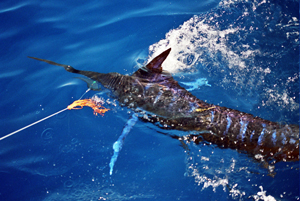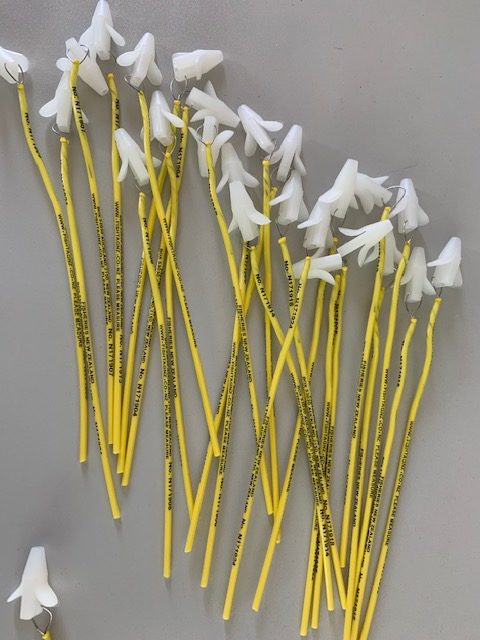- Fisheries Management in New Zealand
- Species
- Customary
- Aotea Great Barrier Temporary Closure 2023
- Astrolabe Reef s186A closure 2016
- Coromandel East temporary closure 2021
- Coromandel East temporary closure 2024
- Hauraki Gulf temporary closures 2024
- Kauaetangohia Mātaitai
- Maunganui Bay temporary closure
- Napier Reef temporary closure 2023
- Ōhiwa Harbour temporary closure 2024
- Ōmāui Mātaitai 2019-20
- Ruapuke Island Mātaitai 2024
- Taranaki temporary closure 2024
- Taranaki temporary closure 2022
- Tautuku Mātaitai 2019-21
- Te Māta temporary closure
- Tutukaka – Ngunguru temporary closure 2023
- Umupuia temporary closure
- Waiheke temporary closure 2021-24
- Waimārama temporary closure 2024
- Waimārama temporary closure 2020 -22
- Whale Island mātaitai 2024
- Whangaroa temporary closure 2021
- Fisheries policy & reform
- Fisheries plans
- Legislation and reviews
- Regulatory reviews
- Aggregation limits application 2024
- Aggregation excess limits EMA KAH 2020
- Crayfish Aggregation limit exemption 2016
- Deemed value review 2016
- Deemed value review 2021
- Deemed value review 2022
- Finfish bag limits review 2021
- Fiordland amateur regulations review 2022
- Papamoa Beach bylaw review 2018
- Seabird mitigation measures 2023
- Technical change proposals 2022
- Submissions by year
- North & South Islands submissions
- 2025 Submissions
- 2024 Submissions
- Aggregation limits application 2024
- Blue cod Marlborough Sounds review 2024
- Coromandel East temporary closure 2024
- Crayfish 1 management review 2024
- Crayfish 3 TAC review 2024
- Crayfish 7 and 8 review 2024
- Exception review for predated HMS 2024
- Extend coastal permits bill 2024
- Fast Track Approvals Bill 2024
- Hauraki Gulf temporary closures 2024
- Jack mackerel pilchard kingfish review 2024
- Kaikōura Pāua 3A TAC review 2024
- Kaikōura pāua reopening 2024
- Kina 1 review 2024
- Kina 3 TAC review 2024
- Kingfish 3 TAC review 2024
- Ōhiwa Harbour temporary closure 2024
- Pacific bluefin landing review 2024
- Ruapuke Island Mātaitai 2024
- Snapper flatfish elephantfish 7 review 2024
- Snapper Rig John dory 2 review 2024
- Snapper 8 TAC review 2024
- Southern bluefin landing review 2024
- Southern bluefin TAC review 2024
- Taranaki temporary closure 2024
- Waikato Regional Coastal Plan 2022-24
- Waimārama temporary closure 2024
- Whale Island mātaitai 2024
- 2023 submissions
- Aotea Great Barrier Temporary Closure 2023
- Coromandel scallop closure review 2023
- Crayfish 1 TAC review 2023
- Deemed values review SNA 2023
- Gurnard 3 TAC review 2023
- Industry Transformation Plan 2023
- Hauraki Gulf Fisheries Plan 2023
- Hauraki Gulf trawl corridors 2023
- Kina 1 TAC review 2023
- Kina dredging Tory Channel review 2023
- Marine Protection Bill 2023
- Napier Reef temporary closure 2023
- Pāua 2 Fisheries Plan 2023-24
- Pāua 2 TAC review 2023
- Red cod land-all catch review 2023
- Seabed mining inquiry 2023
- Seabird mitigation measures 2023
- Trevally 2 TAC review 2023
- Tutukaka – Ngunguru temporary closure 2023
- Waikato Regional Coastal Plan 2022-24
- 2022 submissions
- Blue cod 7 TAC review 2022
- Crayfish 1, 7 & 8 TAC review 2022
- Deemed value review 2022
- Fiordland amateur regulations review 2022
- Fisheries Amendment Bill 2022
- FMA 7 TAC review 2022
- Gurnard 3 TAC review 2022
- Habitats of significance 2022
- Hākaimangō-Matiatia (Northwest Waiheke) Marine Reserve
- Hāpuku Bass 7 & 8 TAC Review 2022/23
- Hauraki Gulf Marine Protected Areas 2022
- Kaikōura pāua reopening 2022
- Maunganui Bay temporary closure
- Northland area closure proposals 2022
- Pāua 5 Draft Fisheries Plan
- Rig 3 TAC review 2022
- Northland & Coromandel Scallop TAC Review 2022
- Tarakihi east coast TAC review 2022
- Taranaki temporary closure 2022
- Technical change proposals 2022
- Te Māta closure application
- Waikato Region Coastal Plan 2022
- Waimārama temporary closure 2020 -22
- Umupuia temporary closure 2008-2024
- 2021 submissions
- Blue cod 3 TAC review 2021
- Cameras on boats 2021
- Clive River dredging 2021
- Coromandel East temporary closure 2021
- Crayfish 1, 3, 4, 5 & Packhorse TAC review 2021
- Elephant fish 7 TAC review 2021
- Finfish bag limits review 2021
- Flatfish 2 TAC review 2021
- Gurnard 1 TAC review 2021
- Hāpuku-Bass 1 & 2 TAC review 2021
- Kaikōura pāua fishery reopening 2021
- Kingfish 8 Deemed value review 2021
- Snapper 8 TAC review 2021
- Southern bluefin tuna TAC review 2021
- Tarakihi east coast TAC review 2021
- Waiheke temporary closure 2021-24
- Whangaroa temporary closure 2021
- Yellow-eyed mullet 9 TAC review 2021
- 2020 submissions
- Aggregation limits kahawai, jack mackerel 2020
- Blue cod 5 TAC review 2020
- Crayfish 1, 3, 4, 7 & 8 TAC review 2020
- Crayfish ACE carry forward 2020
- Gurnard 7 TAC review 2020
- Kingfish 2, 3, 7 & 8 TAC review. July 2020
- Maunganui Bay temporary closure
- National Finfish Fisheries Plan 2019-20
- National Rock Lobster Management Group review 2020
- Northland scallop TAC review 2020
- Pāua 3 subdivision 2020
- Pōrae 1 TAC review 2020
- Sea Change Marine Spatial Plan 2014-21
- Snapper 7 TAC review 2020
- South Island trawl species review 2020
- Tautuku Mātaitai application 2019-21
- Waimārama temporary closure 2020 -22
- 2019 submissions
- 2018 Submissions
- 2017 Submissions
- 2016 Submissions
- Astrolabe Reef closure application
- Bluenose management review
- Coromandel Scallops
- Crayfish 3 Gisborne
- Crayfish management 2016
- Deemed values 2016
- Jack mackerel 3 management review
- John dory 7 management review
- Paua 7 South Island
- Quota aggregation limits exemption
- Scallops (SCA7) management 2
- Seabed mining Taranaki 2016
- Snapper 7 management review
- Surf Clam 7 review 2016
- 2015 Submissions
- 2014 Submissions
- 2013 Submissions
- 2012 Submissions
- 2011 Submissions
- 2010 Submissions
- 2009 Submissions
- 2008 Submissions
- 2007 Submissions
- Regional issues
- Aquaculture
- Bay of Plenty
- Hauraki Gulf
- Coromandel East temporary closure 2021
- Hākaimangō-Matiatia (Northwest Waiheke) Marine Reserve 2022
- Hauraki Gulf Fisheries Plan 2023
- Hauraki Gulf Marine Protected Areas 2022
- Hauraki Gulf trawl corridors 2023
- Marine Protection Bill 2023
- Ponui mussel farm proposal
- Sea Change Marine Spatial Plan 2014-21
- Te Māta temporary closure
- Umupuia temporary closure 2008-2024
- Coromandel scallop closure review 2023
- Waiheke temporary closure 2021-24
- Waikato Region Coastal Plan 2022
- Waikato Regional Coastal Plan 2022-24
- Marlborough and Tasman
- Northland
- Southland and Otago
- Marine protection
- RMA
- Research and reports
- Document Index
- Document Search
Breakthrough striped marlin study.
Dr Julian Pepperell. Feb 2020

Recapture rates for tagged billfish tend to be very low compared with other fish species. For example, on the Australian Gamefish Tagging Program, less than one percent of tagged marlin are recaptured. This has led to the contentious assumption in some quarters that released billfish must have a high mortality rate.
Another statistic that has been difficult to explain for many years is the relatively short maximum time at liberty for tagged striped marlin. While many recaptures of tagged black marlin and sailfish have occurred after long periods following release – exceeding seven years for both species – hardly any tagged striped marlin have been recaptured more than one year after release.
I had long thought that the most likely explanation for this was that striped marlin must be losing or rejecting their tags at a higher rate than other billfish species. However, proving this remained in the ‘too hard’ basket. Until very recently, that is.

Browsing the latest scientific papers on billfish, I came across one that grabbed my attention. The paper described the results of a study in which striped marlin were surgically implanted with data-recording ‘archival’ tags. The researchers, led by well-known billfish scientist Dr Michael Domeier, had been frustrated with the perennial problem of pop-up satellite tags, jabbed into the shoulder of billfish, coming off the fish way too early – 49 days on average for striped marlin.
They therefore decided to implant essentially similar tags into the body cavity so that they could not possibly be released or rejected and would therefore potentially record data for years.
The only problem with this method was that the fish would need to be recaptured in order for the tag to be retrieved and the data downloaded. And that meant a lot of fish would need to be implanted if even one or two tags might be expected to be returned. So, biting the bullet, Michael and his team implanted the expensive tags into 99 striped marlin caught by rod and reel off Magdalena Bay, Mexico between 2008 and 2010.
The results were slow to accumulate but the story that emerged regarding recapture rates was quite remarkable. Of the 99 fish tagged, tags from 10 recaptured fish were returned. This translates into a known recapture rate of 10.1% – an order of magnitude greater than for conventional tagging with dart tags.
Perhaps equally interesting was the fact that times between release and recapture of the implanted fish ranged from 1.1 years to 7.6 years, greatly exceeding the vast majority of times at liberty for conventionally tagged striped marlin. But wait, there’s more.
When the archival tags were implanted, a specially designed external conventional tag was also placed in the shoulder of each fish with a message offering a large reward to retrieve the implanted tag and return it. However, not one of the recaptured fish had retained its external tag, clearly indicating a high tag loss rate, at least from fish at liberty for more than a year.
Surgically implanting a piece of hardware into a live striped marlin is a very different procedure than simply placing a tag into the shoulder of a fish while it is still in the water. Each fish had to be laid on the deck with a deck-hose in its mouth while the tag was implanted and the incision sutured, possibly leading to at least some post-release mortality.
As well, with the external tag missing, it is highly likely that other implanted fish were also recaptured but the tag not noticed at all. In fact, two of the implanted tags were not found until the fish were being processed at commercial facilities. In other words, the actual recapture rate of tagged fish is likely to have been higher than the 10.1% figure, adding further weight to our knowledge that billfish actually have high post-release survival rates, and that striped marlin in particular do indeed reject plastic tags at a relatively high rate.